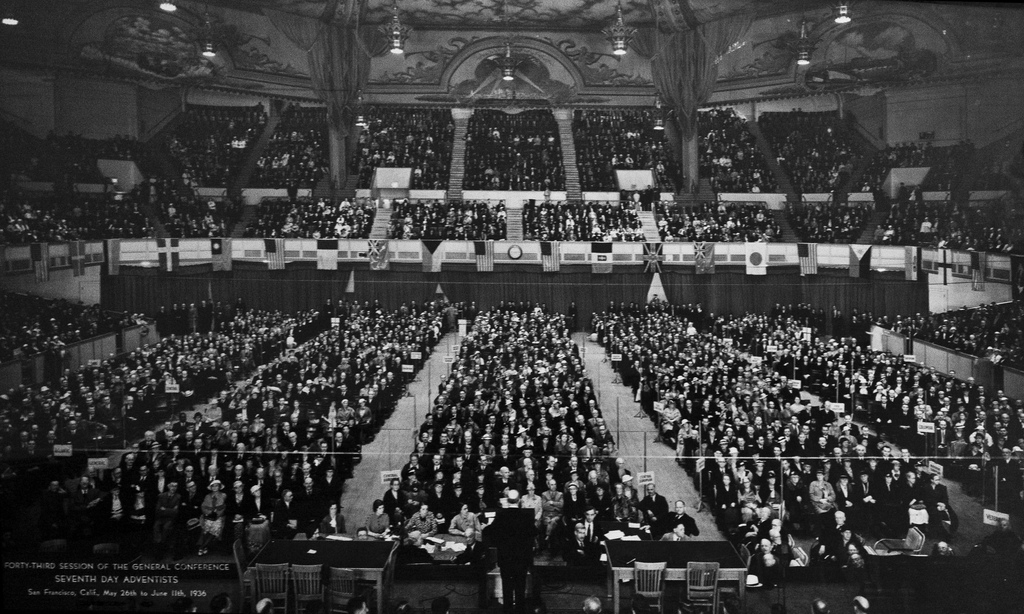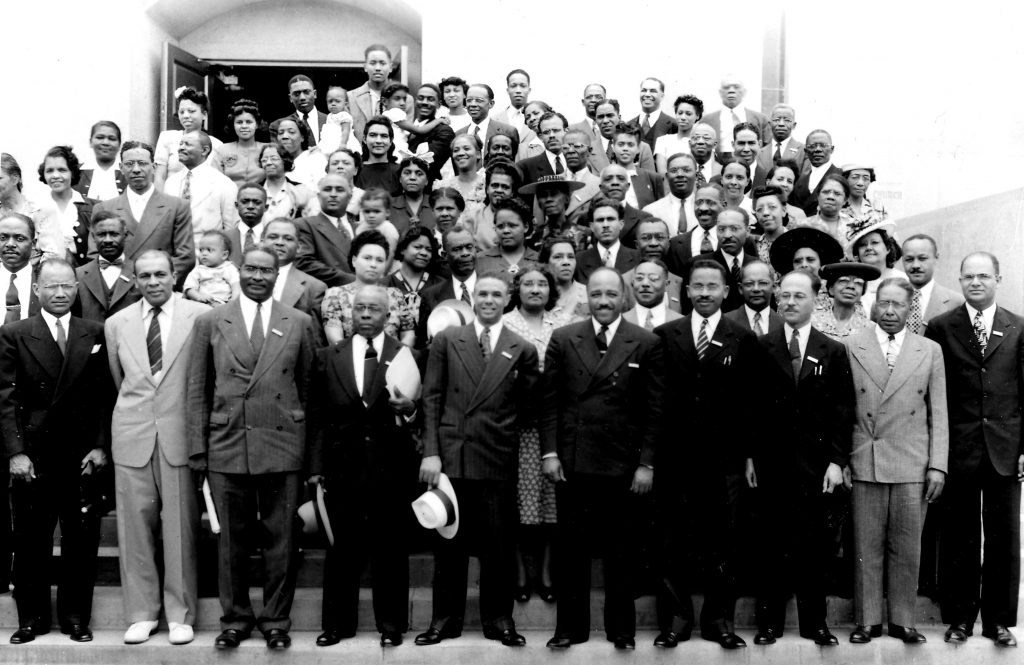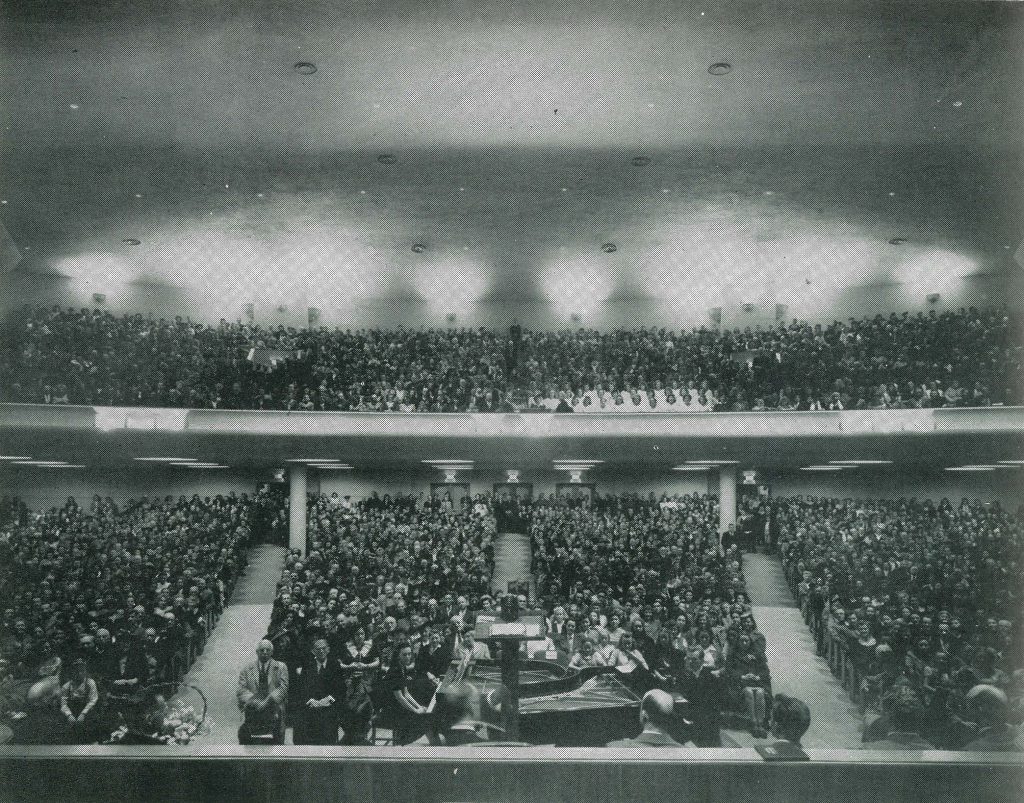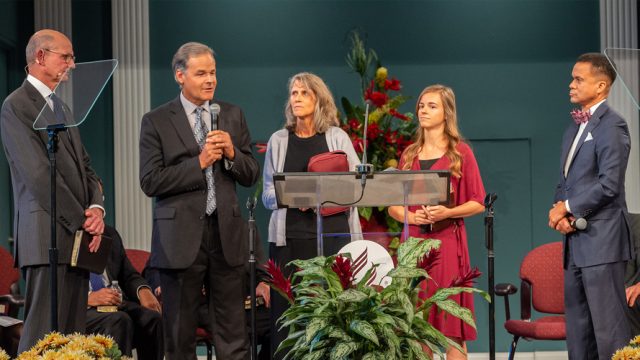This will be the fifth time that a General Conference session has been postponed, and the second time that more than five years elapses between sessions.

Seventh-day Adventists are prone to viewing current events as exceptional. Both church leaders and church members regularly declare there is no precedent in our past for some recent, present-day development. Ironically, in spite of Ellen White’s oft-invoked injunction that Seventh-day Adventists “have nothing to fear for the future except as we shall forget” our past, in practice we tend to have short memories.
In reality there are few developments that are truly without precedent. And that is the case with the decision to postpone the sixty-first General Conference Session, scheduled for June 2020, to May 2021. There is not just precedent; there are several precedents. This will be the fifth time a General Conference (GC) session has been postponed, necessarily extending the terms of officials of the General Conference and its divisions, and unavoidably deferring world Church action on important matters of common concern; it will be the second time that more than five years elapses between sessions.
World War I
It took more than half a century and 38 sessions before the first postponement of a General Conference session. Originally sessions were held annually; after the twenty-eighth session in 1889 they became biennial, and then, after the thirty-sixth session in 1905, quadrennial. In 1913, the thirty-eighth session in Takoma Park ended with the expectation of meeting in 1917. But a year later, World War I began.
By the spring of 1916 North American Division (NAD) church leaders (whose territory at that point was home to 56 per cent of all church members) were concerned that “World conditions are such at the present time that we do not know what a day will bring forth”; it was doubtful that delegates “from countries outside the North American Division” would be able to travel there.
The NAD Committee voted to request the General Conference to give “prayerful consideration” to holding the thirty-ninth session early in 1918 instead of in 1917. The GC polled leaders from around the world by mail and “found that the vote by letter was unanimous in favor of postponement.” The General Conference Committee (GCC) accordingly took an action “to postpone the next quadrennial session from the summer of 1917 to the earliest convenient time thereafter”, with dates to be determined, which they finally were in April 1917. The thirty-ninth session duly met in March and April, 1918.

There was no basis in the GC Constitution as it then existed for such a postponement, but the church really did confront unprecedented circumstances, including submarine warfare which made it utterly unsafe to cross the Atlantic in 1917. Recognizing the exceptional nature of the challenges facing them, church leaders, after due consultation, took an appropriate decision. Ironically, the war situation had not greatly improved by the spring of 1918; but voyaging to the United States was safer, and church leaders evidently felt unable to postpone twice. The thirty-ninth session thus took place in the spring of 1918.
The Great Depression
The forty-second General Conference Session convened in May 1930, slightly more than six months after the Wall Street crash that kickstarted the Great Depression. Just how bad things would get was, however, not yet clear. There had been terrible economic downturns in Britain and North America in the late nineteenth century, but neither national economies nor the Seventh-day Adventist Church were truly global. By the 1930s the interconnected nature of the world’s economy worsened the effects of the Depression and disrupted every part of the Adventist Church.
In the three years after the Wall Street Crash, tithe receipts in the United States fell by 37 percent and mission offerings by 42 percent (though membership increased by 23 percent). GC Treasurer J. L. Shaw had to find $200,000 (at least $4 million today) to hold a Session, even as he and President C. H. Watson were desperately trying to maintain foreign missionaries in place by cutting the work force in the NAD, and cutting the salaries of the remainder. Overseas, at least four of the church’s eleven world divisions simply did not have the funds to send “representative delegations.” Postponing the session gave the GC two more years to save the money needed for its budget and gave divisions two more years to find the money to send delegates. Yet when, at the 1932 Autumn Council, Watson raised the possibility of rescheduling, he first called an executive session of only the division presidents and the GC headquarters staff members of the Executive Committee to present his case—clearly, he expected it to be controversial.

Committee members saw the logic, however, not least because they recognized “the impossibility of the European and other Divisions sending representative delegations if the Conference is held in 1934,” and that the only way to pay for a session then would be “by additional cuts in regular appropriations”. The GC Committee voted: “That the next session of the General Conference be postponed until 1936.” But the Constitution prescribed a four-year term of office, and so the terms of many “members of the General Conference staff” would expire before 1936. The Executive Committee therefore voted that these staff should “be asked to continue in uninterrupted service” up to the rescheduled Session.
As a result, uniquely, there was a six-year term for GC and division officers and department directors following the forty-second session. Up to this year, this is the only time that the interval between sessions has been longer than five years.
In postponing the 1934 session, church leaders had again taken the only sensible course of action, yet they had again done so in the absence of a constitutional mandate to do so. When the forty-third session finally met in May and June of 1936, it amended Article VIII of the GC Constitution to enable the Executive Committee to postpone a session up to two years, “where special world conditions seem … to make it imperative to postpone the calling of the session”. Although perhaps none guessed it, the next two sessions would both be postponed under the new terms of Article VIII.
World War II
Church leaders firmly intended to hold the forty-fourth General Conference Session four years after the postponed forty-third session, in the late spring or early summer of 1940. But in September 1939, World War II broke out. The following month, at Autumn Council, the officers posed “The question … whether or not it would be advisable to go forward with plans for holding the [GC] Session in 1940, in view of the present uncertainty”. There was also concern, as in the past, about whether “a representative conference” could be held given difficulties in travel for overseas division delegations. The minutes record: “The question was discussed at some length, quite a number being in favor of a postponement, while others felt it would be well to hold the session at the appointed time.” In light of the disagreement, a subcommittee was appointed. But it recommended, “because of the prevalence of war [and] of our not being able to have a representative delegation from our overseas divisions”, that the “Session be postponed for one year”. This was then approved.
Twelve months later, the war continued, and the possibility of “a further postponement” was discussed. After another subcommittee gave it brief consideration, however, the Executive Committee decided, without further explanation, to press ahead in May–June 1941. At this point the United States was still neutral (and home to one in three of the church’s half million members worldwide) and it was likely thought better to press ahead, after five years, with whomever could come from the various foreign divisions, than to extend to six years again.

After the 1941 session, the intention was to return to the constitutionally-mandated quadrennial terms between sessions. In 1943, the dates for the forty-fifth Session were set as May–June 1945. By the winter of 1945, however, disquiet was growing about the propriety of holding a major international event, for though the end of the war was clearly in sight, hostilities continued, as did travel controls, rationing, and government restrictions on conventions in the United States. Some feared how the church would be perceived in the public eye if it disregarded the wartime realities on top of the serious practical concerns.
A special council was called in February “to consider whether or not we should go forward with plans for holding the … Session in May”. Discussions were prolonged. While several GC Committee members “spoke of the disappointment that would be experienced if the Session could not be held”, a consensus emerged for postponing, not least because (again) representation from “our overseas divisions” would be very limited. In the end, there was “general agreement that if a postponement would best serve the interests of our worldwide work, then it ought to be postponed.” The result was a voted action that “the General Conference Session that was to have been held in May of this year be postponed one year.”

Twenty-First Century
This then is the Adventist history of rescheduling GC sessions and accordingly extending the terms of office of those elected by sessions. It is still the case that only the Executive Committee is empowered to postpone a session and to extend what are now quinquennial, rather than quadrennial terms. The decision to postpone is one that has never been taken lightly and unadvisedly, and neither has it ever been taken without some sorrow or heartache. Such a decision has not been taken for seventy-five years, during which time the size and expense of a General Conference session have grown immensely, almost immeasurably. The new scale of GC sessions makes any decision to postpone all the more problematic, given the much greater complexity involved in rescheduling at short notice and potentially far greater financial losses.
However, in the face of truly exceptional circumstances—of two world wars and the Great Depression—Seventh-day Adventist Church leaders did not shrink from making difficult decisions that were in the interest of the denomination as a whole. The grounds included the expense in a time of limited resources, the safety of delegates, the public image of the church, and the capability of divisions to be properly represented.
The Covid-19 pandemic is not absolutely unprecedented, but it is utterly exceptional; yet the challenges it poses are similar to those that moved previous generations of church leaders four times to postpone GC sessions. Further, it provides an opportunity to take stock of just how sessions have grown—of their immense expense and fearsome complexity.
Today’s church leaders have acted with both resolution and compassion (given the potential for infection) regarding 2020, and have also taken the chance to look at how the denomination “does” sessions. Nobody is happy that there will be no session in Indianapolis in June 2020. But the church has taken the most prudent and most responsible course of action, and, in doing so, church leaders today have walked—thoughtfully, carefully, and prayerfully—in the footsteps of past leaders, while still keeping their eyes on the future and our “blessed hope.”
Postponing the 2020 GC Session need not entail delaying that future consummation for which we devoutly wish: the Second Coming of Jesus Christ our Lord.
David J. B. Trim is an historian, and serves as director of the Office of Archives, Statistics and Research at the General Conference of Seventh-day Adventists in Silver Spring, Maryland, USA.








